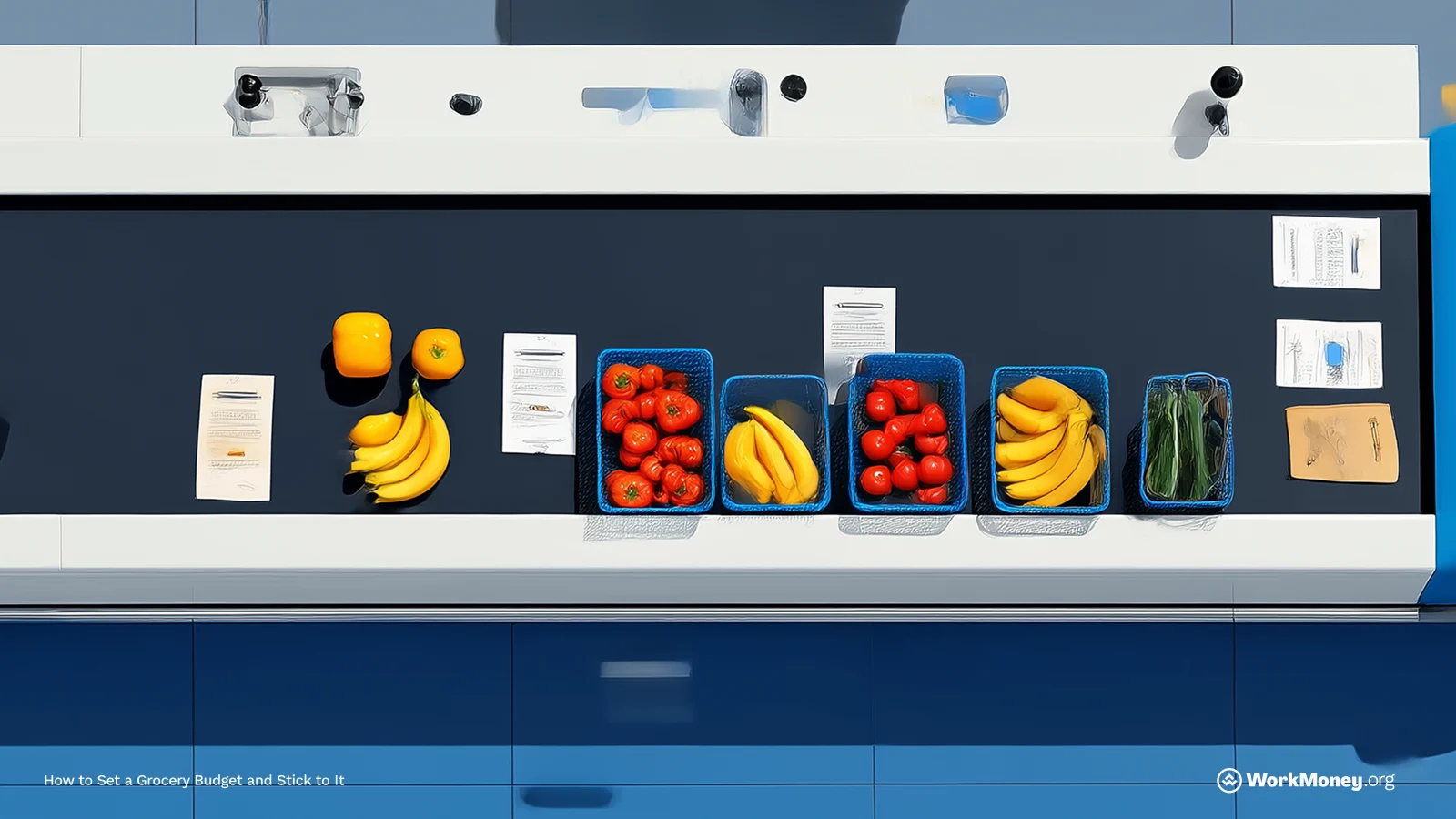How to Set a Grocery Budget and Stick to It
Take control of your grocery spending with smart budgeting, meal planning, and waste-reducing strategies.

Grocery shopping continues to be one of the biggest expenses for families in the U.S, and continues to create financial stress for many. In a recent LendingTree survey, a whopping 61% cited stress over paying for groceries in the past month. The stress is justified: grocery prices have risen an estimated 30% since the pandemic.
Yes, a budget can help shoppers, but there’s only so much you can cut back on. So if you find yourself discouraged after your grocery stores run, here are a few steps you can take.
Determine a Realistic Grocery Budget
The USDA gives a variety of food cost estimates on a monthly basis, so you can compare your budget against the national average. They are updated monthly as food prices go up and down, giving you a near real-time estimate of what others are spending. Here are amounts set by the USDA to follow:
Single adult: $250–$400 per month
Couple: $500–$800 per month
Family of four: $900–$1,500 per month
These numbers can vary widely based on factors like diet restrictions, buying in bulk, location, and more. To find the right number, consider writing down each item and how much it exactly costs. From that number, give yourself a percentage of wiggle room that fits your overall monthly budget.
Plan Your Meals and Make a List
Meal planning is an excellent way to maximize each dollar, decrease waste, and make your time in the grocery store more efficient. Here’s how you can start planning effectively:
Plan meals around what you already have at home.
Consider looking at sales from your grocery store and plan meals around that.
Bring your meal list to the grocery store and stick to it.
Include a few flexible meals in case plans change.

Use the Right Budgeting Method
There isn’t a one-size-fits-all method to budgeting, but it’s vital to find a system that works for you. Here are a few ideas to consider:
Envelope System: Withdraw your grocery budget from your bank account in cash and spend only what’s available. This also avoids potentially slipping into credit card debt.
Budgeting Apps: There are several different apps like YNAB (YouNeedABudget), EveryDollar, and GoodBudget. Additionally, there are grocery-specific budgeting apps that help you save on your groceries, including Flipp, Mealime, Grocery Pal, and more.
Coupon Apps: Apps like Upside can help you save on the items you normally buy, including groceries and gas.
Grocery-Only Account: Use a separate debit card for grocery shopping to track expenses easily.
Shop With A Plan: Tips to Lower Your Grocery Bill
With some planning, you could save a significant amount at the grocery store. Here are a few ways to get started.
Find The Best Deal: Not all grocery stores are equal in their prices, even within the same brand. So take the time to research the stores you have in your area. You can find up to date deals in their weekly coupon sheets in your mailbox or on their website/app.
Consider using online communities like Facebook and Reddit to find where others in your local community shop to stretch their dollars.
Buy Generic Brands: Store brands often have the same quality as name brands but cost less.
Shop Sales & Use Coupons: Check weekly ads and use cashback apps like Ibotta to find even more savings.
Buy in Bulk (Smartly): Bulk items can be cheaper in the long run. You may even consider buying in bulk and splitting the items with someone you know to lock in the savings without the long investment.
Avoid Shopping When Hungry: Studies show you’re more likely to spend more when you’re hungry. Be sure to eat beforehand.
Set a smarter grocery budget and earn cash back every time you shop—see how the Upside app makes it easy.
Minimize Food Waste to Maximize Savings
We’re all guilty of wasting food at one point. Estimates suggest 30-40% of all food is wasted each year, costing families $1,500 per year on average, according to the USDA. Here are a few ways to stretch your food inventory to its maximum potential.
Store perishable foods properly.
Use leftovers creatively (e.g., soups, stir-fries, casseroles). Here are a few examples of what you can make from what you have.
Roast Chicken → Chicken Salad or Soup – Shred leftover roast chicken for a chicken salad, tacos, or a hearty soup.
Rice → Fried Rice or Rice Pudding – Turn leftover rice into fried rice with veggies and protein, or make a sweet rice pudding with milk, sugar, and cinnamon.
Pasta → Pasta Bake or Frittata – Toss leftover pasta with some cheese and sauce, then bake for a fresh dish. Or mix with eggs for a pasta frittata.
Mashed Potatoes → Potato Pancakes or Shepherd’s Pie – Mix mashed potatoes with eggs and flour to make crispy potato pancakes, or layer with meat and veggies for shepherd’s pie.
Freeze extra portions or bulk purchases.
Label and organize your pantry to avoid expired items.
Get Extra Help If You Need It
If you need extra help, there are public assistance programs available. SNAP (Supplemental Nutrition Assistance Program) and WIC (Women, Infants, and Children) provide financial assistance for groceries.
Each program has different eligibility requirements. For example, SNAP relies on income and household size, while WIC aims to help women and children, along with income and nutritional needs.
Here’s how those benefits could make a meaningful difference in your grocery budget:
# of people in household | USDA suggested grocery budget | SNAP monthly maximum benefit |
|---|---|---|
1 | $250-$400 | $292 |
2 | $500-$800 | $536 |
4 | $900-$1,500 | $768 |
Signing up for a program like SNAP can sound time-consuming, but the process is streamlined to ensure people get the help they need. Here is the current process and expected timing when applying for SNAP:
Online or Paper Application: 30-60 minutes
Interview (if required): Usually scheduled within 7-10 days
Processing Time: States have up to 30 days to process applications, but emergency SNAP can be approved within 7 days for those in urgent need.
Final Thoughts
There’s plenty of frustration from consumers about the rising cost of groceries. A recent MarketWatch story documented a few consumers crunching their budgets in reaction to rising prices.
If this feels like an uphill battle, know that you aren’t fighting this alone. Going forward, know that you can take control of your grocery spending by using strategies like planning meals, shopping intentionally, reducing waste, and tracking expenses. With the right approach, budgeting can become second nature, allowing you to save money while still enjoying the meals you want.
About the Author

Brett Holzhauer
Brett Holzhauer is a Certified Personal Finance Counselor (CPFC) who has reported for outlets like CNBC Select, Forbes Advisor, LendingTree, UpgradedPoints, MoneyGeek and more throughout his career. He is an alum of the Walter Cronkite School of Journalism at Arizona State. When he is not reporting, Brett is likely watching college football or traveling.

